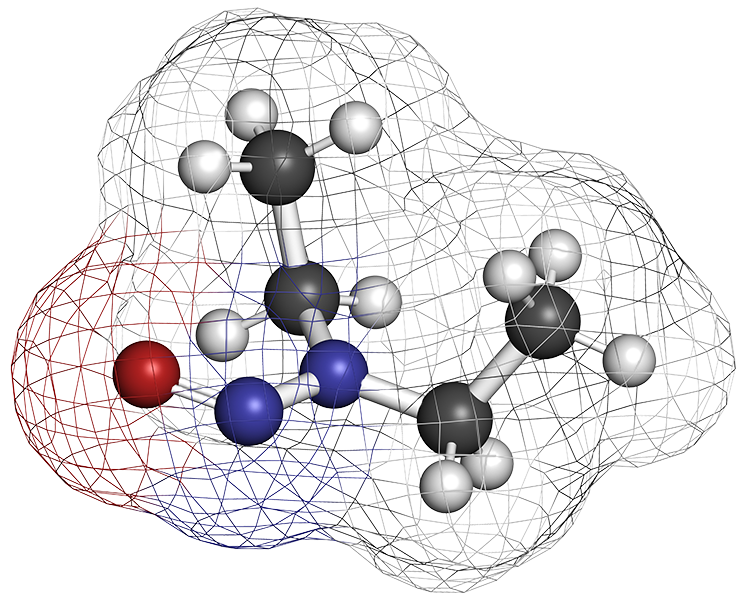Inotiv is Your Partner in Impurity Evaluation
When developing new small molecule drugs, it is essential to conduct thorough impurity and degradant evaluations for both the active pharmaceutical ingredient (API) and the formulated product. Global regulatory agencies, including the Food and Drug Administration (FDA), require the identification, reporting, and qualification of all impurities and degradants in a drug.
Inotiv understands the importance of adhering to International Council for Harmonisation of Technical Requirements for Pharmaceuticals for Human Use (ICH) guidelines throughout the drug development process. Some impurities, present even in small amounts, may influence the efficacy and safety of the pharmaceutical product. As a drug developer, understanding why, when, and how the guidance documents are applied, will help you avoid obstacles that will disrupt your program and increase the probability of success of your drug’s development.
Let Inotiv help you navigate the complex world of impurity and degradant evaluation.
Inotiv is well versed in the latest regulatory guidelines, including ICH Q3A, ICH Q3B, and ICH M7 guidelines as well as the most recent guidance document from the FDA on the Control of Nitrosamine Impurities in Human Drugs. Our team of experts offers comprehensive analytical methods, in vitro metabolism, and mutagenicity assessment solutions to help you meet these stringent requirements.
Impurity Identification by LC/MS
We offer technology platforms for small molecule impurity analysis. These platforms are comprised of industry leading instrumentation to support global studies with rapid, precise, and reproducible results. Our technology platforms include:
- Liquid Chromatography (LC and UPLC), Tandem Mass Spectrometry
- AB SCIEX™ Platform (5500, 6500, 7500)
- High Resolution Mass Spectrometry (HRMS) Technology
- Thermo Exploris™
- AB SCIEX™ 7600 ZenoTOF
- UPLC-HRMS systems include UV/DAD detectors in line with the HRMS detector
ICH M7 Supporting Studies:
The ICH M7 guidance document provides recommendations for assessing mutagenic impurities that may be present in the final drug substance or product, considering the intended use and conditions of human exposure. Inotiv can perform studies required for the assessment of mutagenic impurities, including in-silico testing for bacterial mutagenicity and a comprehensive genetic toxicology package to limit potential carcinogenic risk.
Inotiv offers Quantitative Structure–Activity Relationship (QSAR) as a powerful computational tool. QSAR predicts the potential adverse effects of chemical substances based on their molecular structures. This technology is invaluable for:
- Lead Candidate Selection: Identifying promising compounds early in the drug development process
- Chemical Assessment: Evaluating agricultural, industrial, and pharmaceutical chemicals
- Impurity Analysis: Assessing impurities, including those relevant to the ICH M7 guideline for bacterial mutagenicity
Our expert rule and statistical-based models include:
- Leadscope®
- CASE Ultra
- OECD QSAR Toolbox
Genetic Toxicology Solutions for Impurities
Ames Assay (Bacterial Reverse Mutation Assay)
The ICH M7 guideline provides an outline for the testing of mutagenic impurities based on the results of the QSAR analysis, starting with the Ames Assay.
Impurities with high mutagenic potential are of primary concern. The Ames Test provides a simple, straight-forward measure of the mutagenicity of small molecule formulations of pharmaceuticals or impurities and more. Inotiv offers a range of Bacterial Mutation designs including:
- Ames Plate Incorporation Method
- Ames Preincubation Method
- Miniaturized 6 Well Ames for Limited Test Article

In Vivo Follow-Up Tests to Positive Ames Test
- Pig-a gene mutation assay (blood) – Used for direct acting mutagens (Ames assay positive without S9 metabolic activation)
- Micronucleus Assay in blood or bone marrow – Used for direct acting mutagens (Ames assay positive without S9 metabolic activation) and clastogenic compounds
- Comet Assay – Justification needed to use this as a follow-up assay
Nitrosamine and Nitrosamine Drug Substance-Related Impurity (NDSRIs) Safety Testing
Nitrosamines are powerful cancer-causing substances found in food and beverages, including cured meats, grilled foods, dairy, and vegetables, and, more recently, medications. While everyone is exposed to some level of these compounds, prolonged exposure to high levels of nitrosamine impurities can increase your risk of cancer. However, taking a drug with nitrosamines at or below the safe limit for 70 years, is not expected to increase your risk of cancer. The Food and Drug Administration (FDA), working with global regulators, has established safe daily intake limits for nitrosamines. Drugs containing levels above these limits are recommended for recall.
More importantly, NDSRIs, a subset of nitrosamine impurities with structural similarities to APIs, typically have limited compound-specific mutagenicity and carcinogenicity data, hindering comprehensive safety assessments.
Currently, the FDA, ECHA and other regulatory bodies prescribe safety testing of nitrosamine impurities and NDSRIs to include an Enhanced Ames Test (EAT). Additionally, in order to support an Acceptable Intake (AI) limit of 1500 ng/day, the FDA has also recommended additional tests in the case of a negative EAT, including an in vitro mammalian cell mutation assay and in vitro metabolism test in human hepatocytes or microsomes.
Inotiv is able to support the international safety testing requirements as recommended by the FDA and other worldwide regulatory agencies, with the following studies:
Enhanced Ames Test (EAT)
The Enhanced Ames Test is conducted using the pre-incubation method and incorporating 30% rat and 30% hamster S9 into the otherwise standard study design. Additionally, two N-nitrosamine or NDSRI positive controls that are known to be mutagenic in the presence of S9 are included in the study.
HPRT Mammalian Cell Mutation Assay or Mouse Lymphoma Assay
The HPRT assay measures induction of mutations at the hypoxanthine-guanine phosphoribosyl transferase (HPRT) gene in Chinese hamster (CHO) cells. Preliminary dose-finding study and mutation assay is performed with (+S9) and without (-S9) metabolic activation. The assay design includes cloning multiple test article concentrations in triplicate plates per replicate culture for cytotoxicity and five plates per replicate culture for mutant selection.
The Mouse Lymphoma assay measures induction of mutations at the thymidine kinase (TK) gene in L5178Y mouse lymphoma cells. Preliminary toxicity assay and mutation assays are performed with (+S9) and without (-S9) metabolic activation. The mutation assay includes cloning multiple test article concentrations in three replicate plates per dose for cytotoxicity and mutant selection. Colony sizing is performed for vehicle and positive controls and for mutagenic test articles. Soft agar methodology is used for mutant selection.
Additional N-nitrosamine positive controls may be added to the study design.
More information on mammalian mutation assays can be found here.
In vitro metabolism studies in human hepatocytes or microsomes can be performed on the nitrosamine of interest to add to weight of evidence in the safety evaluation. More information on the relevant in vitro metabolism studies can be found here.




